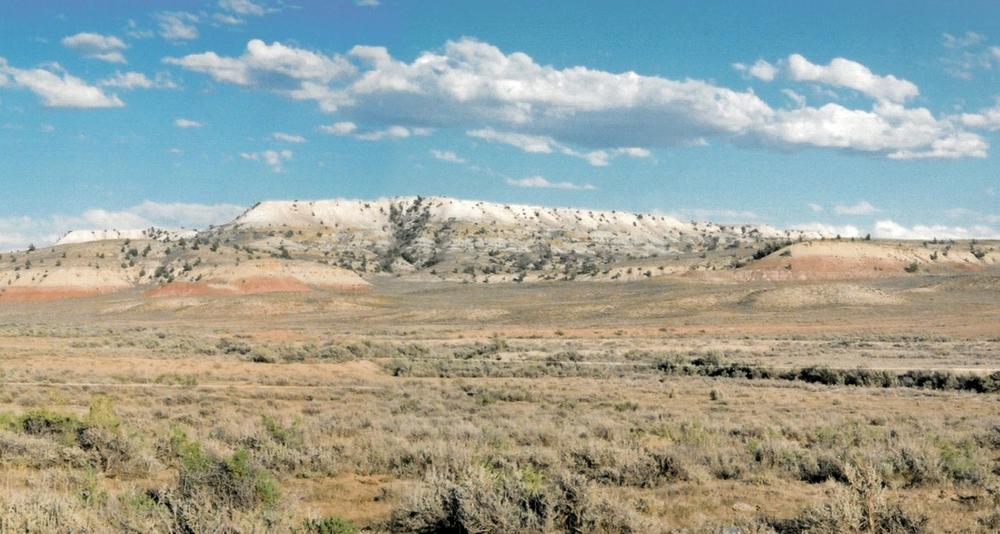
Not So Hot After All? Fossil Lizards and Snakes Reveal New Information About the Eocene Climate
How much does the earth warm up when the CO₂ content in the atmosphere increases? This is not just a question for climate researchers, it is also highly relevant to politics and society. Reconstructing the climate of past geological eras can provide clues to future developments. Senckenberg researchers PD Dr. Krister T. Smith and PD Dr. Angela Bruch have now applied a new approach to reconstructing the climate of the Earth’s past. They analyzed fossil remains of lizards and snakes from three sites in the United States that date back to different periods during the Eocene. Using evolutionary trees and the present-day habitats of related species, they were able to draw conclusions about the environmental conditions at that time – including temperature, precipitation, and seasonal fluctuations.
“Until now, scientists have assumed that the global average temperature was very high throughout the early Eocene, 56-47 million years ago, and that it cooled down significantly over the following millions of years,” explains Smith, the head of the study and a paleoherpetologist at the Senckenberg Research Institute and Natural History Museum in Frankfurt. “This picture was mainly based on oxygen isotope measurements from fossil marine organisms. The data from our new study now show that temperatures in North America in the late Eocene were very similar to those in the early Eocene – our results do not indicate a cooling of the kind previously inferred from marine data. This means that the much-cited global cooling during the Eocene may have been more of a regional phenomenon in the high latitudes, where water sinks into the deep ocean – especially around Antarctica. This trend may not have affected the entire Earth.”
The study’s findings suggest that the Eocene in North America had a stable, warm but not hot climate over many millions of years, with only short-lived fluctuations. This result is also more consistent with the reconstructed CO₂ concentrations of that time, which were also relatively constant.
“If temperatures in the early Eocene were not as hot as assumed, the so-called climate sensitivity must also be reassessed,” adds paleobotanist Bruch, the study’s co-author, who also works at the Senckenberg Research Institute and Natural History Museum in Frankfurt. “The previously assumed extremely hot temperatures throughout the early Eocene, along with a relatively low CO₂ concentration in the atmosphere, led to the hypothesis that the Earth reacts particularly sensitively to CO₂ during warm phases. Our results now suggest that the temperature increase for each doubling of CO₂ in this past warm epoch was lower than previously assumed. This has implications for today’s climate models, which simulate future developments based on past climate changes – particularly in the context of high CO₂ emission scenarios.”
“Our study underlines the importance of investigating climate change from various regions and using different methodologies,” emphasizes Smith. “This is the only way we can gain a more complete picture of the way the Earth’s climate works.”
Instead of relying on plant fossils or geochemical measurements, the team used a so-called “phylogenetically extended coexistence method” in their new study. This involves estimating the ecological tolerances of extinct animals based on their closest modern relatives. For the first time, the scientists were thus able to reconstruct detailed climate values such as average annual and quarterly temperatures and precipitation levels for three sites in the Rocky Mountain Interior of North America.
“In the future, our new methodological approach could also be applied to other groups of animals and plants or to geographical regions in order to gain an even more comprehensive understanding of past climate conditions,” concludes Smith. “Our study can provide new impetus for climate research and help to continuously improve existing climate models – an important step towards improving the assessment of our climate’s future.”
Publication
Smith, K. T., & Bruch, A. A. (2025).
Persistent greenhouse conditions in Eocene North America point to lower climate sensitivity.
Communications Earth and Environment.
https://doi.org/…
The Senckenberg Gesellschaft für Naturforschung (Senckenberg Nature Society), a member institution of the Leibniz Association, has studied the “Earth System” on a global scale for over 200 years – in the past, in the present, and with predictions for the future. We conduct integrative “geobiodiversity research” with the goal of understanding nature with its infinite diversity, so we can preserve it for future generations and use it in a sustainable fashion. In addition, Senckenberg presents its research results in a variety of ways, first and foremost in its three natural history museums in Frankfurt, Görlitz, and Dresden. The Senckenberg natural history museums are places of learning and wonder and serve as open platforms for a democratic dialogue – inclusive, participative, and international. For additional information, visit www.senckenberg.de.
Senckenberg – Leibniz Institution for Biodiversity and Earth System Research // Senckenberg Gesellschaft für Naturforschung
Senckenberganlage 25
60325 Frankfurt
Telefon: +49 (69) 7542-0
Telefax: +49 (69) 746238
http://www.senckenberg.de
Senckenberg Research Institute and Natural History Museum Frankfurt
Telefon: +49 (69) 7542-1218
E-Mail: krister.smith@senckenberg.de
Senckenberg Research Institute and Natural History Museum Frankfurt
Telefon: +49 (69) 7542-1568
E-Mail: angela.bruch@senckenberg.de
Referentin für Presse- und Öffentlichkeitsarbeit
Telefon: 06975421595
E-Mail: katharina.decker@senckenberg.de
![]()




